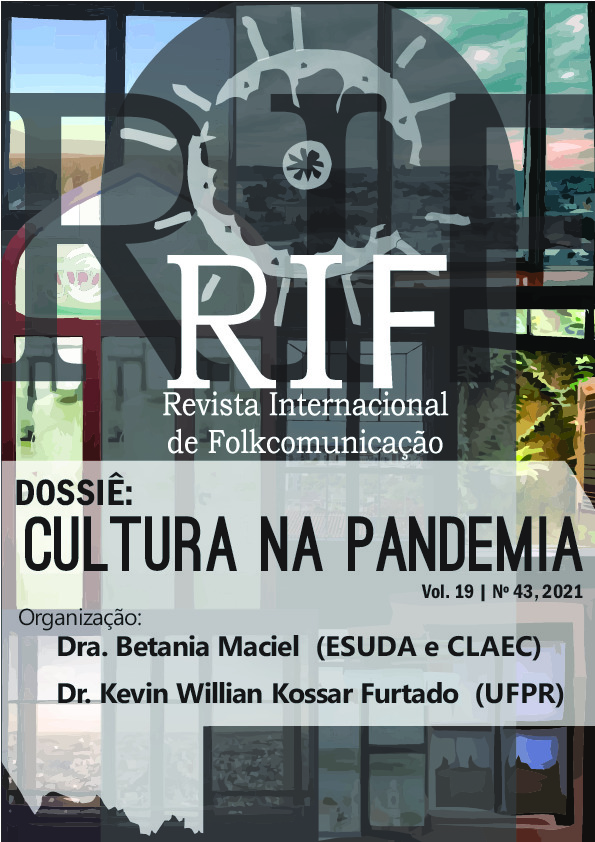Graffiti in times of the Covid-19 pandemic: a Folkcommunication based analysis of urban art
DOI:
https://doi.org/10.5212/RIF.v.19.i43.0007Abstract
With the year 2020 being marked in History by the worldwide pandemic caused by the new coronavirus and the Covid-19 disease, all traces of human sociability were impacted, not only from the perspective of social isolation, but from the effects of disease and death. Given this commotion, our proposal is to analyze how the various themes of the pandemic were approached from the alternative non-hegemonic and popular communication system, specifically urban graffiti. As a premise, we consider that this form of image expression consists of a channel of Folkcommunication, through which the marginalized layers of society apply a new meaning to “official” communication flows and messages. From image analysis applied to urban graffiti pandemic themed around the world, we explore the capacity of this type of expression to serve as a communicational tool on individual, collective and political levels, acting both in conjunction with the hegemonic discourse in relation to the preventive actions, as in a contesting way, claiming the needs of the popular classes and questioning from a political point of view the actions of national leaders in the pandemic management.
Downloads
Published
How to Cite
Issue
Section
License

Este obra está licenciado com uma Licença Creative Commons Atribuição 4.0 Internacional.
Os autores são responsáveis, em qualquer que seja o formato do texto, pelas opiniões expressas ou indiretas presentes em seus respectivos trabalhos, não endossáveis pelo Conselho Editorial e pelos editores da Revista, bem como pela autenticidade do trabalho. Ao publicar trabalhos na Revista Internacional de Folkcomunicação, os autores cedem automaticamente os direitos autorais à publicação para veiculação das produções acadêmicas, sem ônus para a Revista. Os autores detêm os direitos autorais do texto para o caso de publicações posteriores e concedem à Revista Internacional de Folkcomunicação o direito de primeira publicação, com o trabalho simultaneamente licenciado sob a Creative Commons Attribution License, que permite o compartilhamento do trabalho com reconhecimento da autoria e publicação inicial nesta Revista. Por serem publicados em revista de acesso livre, os artigos são de uso gratuito, com atribuições próprias, em atividades educacionais e não-comerciais, sendo permitida a publicação simultânea em repositórios institucionais.































